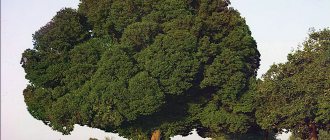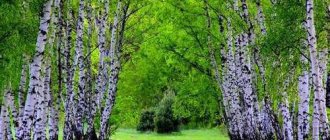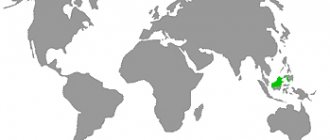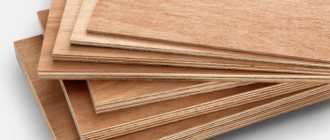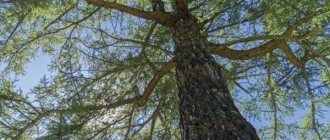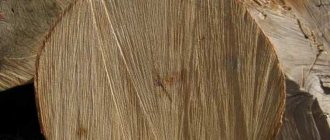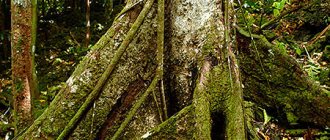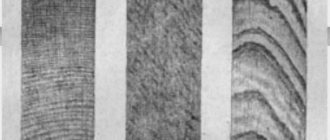When we hear the phrase - mahogany, luxurious furniture in rich houses, musical instruments and, of course, majestic trees pop up in our minds.
Even before our era, to the famous King Solomon, merchants brought such wood from Ophir, the center of eastern trade of that time. According to the famous historian I. Flavius, the material was used in the construction of the temple, its palace and for the manufacture of harps and other stringed instruments. Scientists believe that this was the wood of the red sandalwood tree, which today grows in Sri Lanka and India. What is this unique plant? What is remarkable about its wood and where is it used? The answers to these questions will help you plunge into the wonderful world of majestic trees. Find out the height of the sequoia here!
Red sandalwood can reach up to 9 m in height. Its hard wood has a fine grained character, is wonderfully workable and is suitable for making musical instruments mentioned in ancient books.
Mahogany - what is it?
Under this name, different species are united, which are endowed with a certain color and quality of wood. The description of mahogany highlights the following characteristics: high strength, ease of processing and durability. Wood is used to make various interior items and furniture, and the trees themselves can decorate landscape design. The most common representatives of this species:
- sappan;
- mahogany;
- sandalwood pterocarpus;
- Malay paduk;
- yew berry;
- Jatoba;
- the entire family of Svitenia.
Where does the red tree grow?
These valuable breeds can be found in countries with warm climates, for example, on the island of Fiji, Africa, India, South and Central America and other territories. In addition, plants were introduced to Sri Lanka, Madagascar and the Cape Verde Islands. Such a representative as beech is found in the Caucasus, Crimea and southern regions of Russia. Hornbeam is a mahogany tree that grows in Europe, Asia Minor and Iran. Belize is the Honduran representative. Yew grows on the Pacific coast of America.
Characteristics of mahogany
Breeds belonging to this species have a number of unique qualities that make them elite raw materials. The following properties of mahogany can be distinguished:
- amenable to different types of processing;
- easy to polish and dry;
- has high resistance to erosion;
- differs in durability and wear resistance;
- has high impact resistance;
- almost not deformed;
- endowed with resistance to moisture and chemicals;
- not damaged by pests and fungi;
- are not susceptible to atmospheric influences.
Logging
Europe learned about mahogany species during the period of great geographical discoveries and colonization. Since then, valuable wood has become an import item for European countries. It was always incredibly expensive. Trees of the above species grow very slowly - on average 2 cm per year; they do not form dense thickets, but grow rarely, at a certain distance from each other. Therefore, intensive deforestation has led to the fact that tropical forests are now greatly depleted in the species and types of mahogany. This set the goal for developed countries to preserve and increase plantings of valuable species. Currently, a number of countries have adopted laws regulating logging, which is also monitored by public organizations in a variety of ways, even by observations from a helicopter.
Mahogany species
The following types are currently popular:
- Mahogany
. It grows in the Central American jungle. The height of the tree is up to 60 m. The diameter of the trunk is about 2 m. Under the bark there is wood of various shades and densities. - Amaranth
. Found throughout South America. The tree is up to 25 m high and reaches 80 cm in diameter. On the cut, thanks to the interweaving of fibers, you can see the original pattern. Studying mahogany, what kind of species it is, we note that amaranth is distinguished by its ability to restore color after removing the top layer. - Keruing
. The breed grows in Southeast Asia. Reaches a height of 60 m. Crimson or red inclusions are visible on the cut. Due to the presence of rubber resins, wood is resistant to moisture. - Tick
. This mahogany tree is found throughout the African continent. The wood has a uniform golden color. The distinctive properties of this breed include the ability to withstand strong mechanical loads. - Merbau
. Habitat: northern latitudes of Australia and southern Asia. On the cut, the red wood has golden veins. The material is resistant to moisture and insect attacks.
In addition, there is wood of secondary value, which is also popular:
- white and Siberian derain;
- berry and pointed yew;
- Daurian zhoster;
- sequoia;
- the peel was fragrant.
Cultivation Edit
According to the chronicles of the first Portuguese settlers, during the ripening of fruits and harvest, Indian tribes from the depths of Brazil headed to the coast and fought there the so-called “wars for acayu” (port. guerras do acayu). During the time of Dutch dominance in northwestern Brazil, Johann Moritz of Nassau-Siegen imposed a fine of 100 florins for one felled tree “due to the fact that its fruit is important for the subsistence of the Indians.”
Initially introduced into cultivation in Brazil, in the second half of the 16th century the Portuguese brought the tree first to Goa, then to India and Africa, and now it is grown in 32 countries with warm and humid climates. In total, about 35.1 thousand km² are occupied by cashew plantations in the world. World cashew nut production is estimated, according to FAO, at 2.7 million tons annually. The average yield is 780 kg per hectare.
The main suppliers of cashew raw materials to the world market are Vietnam (960.8 thousand tons in 2005), Nigeria (594 thousand tons), India (460 thousand tons), Brazil (147.63 thousand tons) and Indonesia (122 thousand tons). India comes out on top in terms of cashew consumption, despite the relatively low quality of the products. These countries collectively account for more than 90% of world nut exports. The major cashew trading centers in India are Palasa, Kollam, Mangalore and Kochi.
| Cashew production (thousand tons) | |||||||||||||
| A country | 1965 | 1970 | 1975 | 1980 | 1985 | 1990 | 1995 | 2000 | 2005 | 2006 | 2007 | 2008 | 2009 |
| Vietnam | 0.7 | 2 | 3 | 6 | 60 | 140 | 202 | 270 | 961 | 1092 | 1250 | 1234 | 958 |
| India | 100 | 123 | 144 | 180 | 221 | 285 | 322 | 520 | 544 | 573 | 620 | 665 | 695 |
| Nigeria | 22 | 25 | 25 | 25 | 25 | 30 | 95 | 466 | 594 | 636 | 660 | 728 | 581 |
| Ivory Coast | 0.4 | 0.3 | 0.4 | 0.6 | 3 | 6 | 39 | 63 | 185 | 235 | 280 | 309 | 246 |
| Brazil | 14 | 20 | 20 | 75 | 115 | 108 | 185 | 139 | 153 | 244 | 141 | 243 | 220 |
| Indonesia | 9 | 9 | 21 | 30 | 75 | 70 | 135 | 149 | 146 | 157 | 145 | ||
| Philippines | 5 | 6 | 4 | 4 | 4 | 4 | 6 | 9 | 116 | 113 | 112 | 112 | 112 |
| Tanzania | 76 | 107 | 116 | 41 | 33 | 17 | 63 | 121 | 90 | 77 | 93 | 99 | 79 |
| Mozambique | 136 | 184 | 188 | 71 | 25 | 22 | 33 | 58 | 104 | 63 | 74 | 85 | 68 |
| Guinea-Bissau | 2 | 2 | 2 | 3 | 13 | 30 | 29 | 73 | 89 | 95 | 98 | 81 | 65 |
| Benin | 0.05 | 0.6 | 0.3 | 1 | 1 | 3 | 15 | 40 | 52 | 55 | 60 | 62 | 49 |
| Thailand | 0.8 | 1 | 2 | 4 | 9 | 12 | 18 | 29 | 30 | 35 | 43 | 41 | 38 |
| Ghana | n/a | n/a | n/a | n/a | n/a | 0,5 | 1 | 8 | 29 | 34 | 40 | 45 | 36 |
| Malaysia | 4 | 4 | 11 | 5 | 6 | 10 | 13 | 16 | 35 | 38 | 13 | 13 | 10 |
| Kenya | 9 | 22 | 22 | 15 | 8 | 7 | 5 | 12 | 11 | 11 | 13 | 10 | 8 |
| The whole world | 386 | 512 | 564 | 464 | 574 | 733 | 1131 | 1932 | 3178 | 3502 | 3690 | 3929 | 3351 |
Mahogany oil
The main task of using such a product is to protect the surface from biological contamination, high humidity and destruction. High-quality oiling hides defects and minor imperfections. In addition, expensive wood receives the following positive properties:
- improving performance characteristics;
- improvement of external attractiveness;
- increase in service life.
Natural oil penetrates deeply into the fibers of mahogany, increasing its properties. The compositions are classified according to the main technical parameters:
- density;
- viscosity;
- amount of dry residue;
- type of volatile substances.
The most popular for self-processing are:
- Tung
. Suitable for processing everything from floors to dishes. Popular manufacturer Borma Tung Oil. - Degtyarnoye
. Used for application to external surfaces in contact with water. The compositions Tume Torvaoli or Hele Torvaoli are of good quality. - Linen
. The cheapest option for various jobs. A popular type is OxiDom or Neomid. - Vaseline
. Helps emphasize the naturalness of wood. You can choose, for example, Biolar.
Questions of history.
Initially, the tree was used by Spanish settlers (discoverers of the New World) exclusively as a building material - as ship timber or for the construction of palaces and monasteries. The credit for the discovery of the extraordinary decorative qualities that made mahogany indispensable in furniture production belongs to the British, who, conducting extensive trade in America, were able to export this wood in unlimited quantities. It is believed that the beauty of mahogany was noticed at the very end of the 17th century. Sir Walter Ralley, captain of the West India Company. He brought several logs of this heavy tree to England as ballast. However, it began to be widely used in England no earlier than the 1720s.
How to identify mahogany?
People like to fake expensive wood, so it is recommended to ask for documents that can be used to establish the authenticity of the material. In order not to fall for the trick of unscrupulous sellers, you need to know what mahogany looks like. You can use the following recommendations:
- Akazhu wood has a red heartwood and greenish sapwood. The treated surface of this wood is revealed by small strokes grouped in stripes that are arranged in parallel.
- High-quality material is able to reflect streams of light and exhibit shine.
- The Akazhu tree has dark stripes that can be seen on one side, turning into light ones when viewed from the other side.
- The wood on carvings darkens slightly over time.
- In dark red meranti, the sapwood is lighter in tone than the heartwood, which acquires a dark red tone over time.
Origin of the name Edit
Cashew tree in Brazil, near Fortaleza.
The Latin name comes from the Greek word kardia.
- the heart, since the so-called apple (false fruit) has a similar shape to it.
Cashews are easy to cultivate, which was successfully used by the Tikuna Indians living in the territory of modern Brazil. They used the bark, leaves, and fruits of the tree for a variety of purposes, not only culinary. In the Tikuna language, cashew is called acaju
(meaning “yellow fruit”).
The name in Portuguese “caju” (port.caju) or “acajou” (port.acaju) comes from a word in the Tupiacayu language [2], the components of which have the following meanings: a
– fruit;
´ ác
– which connects;
aiú
– fibrous; that is, a fruit that consists of fibers; fibrous fruit. The French traveler Andre Theve, in his description of Antarctic France, called the tree and nut “acaiu” or “acaiou” (French Acaïou) [3]. The Indians of Brazil counted a person's age by the times of flowering or harvesting, so they associated the word “caju” with the concept of “year of life” (port.ano de vida), and this meaning was preserved in the Brazilian version of spoken Portuguese in informal communication [2]. It is from the Portuguese names of the fruit “caju” and the tree itself “cajueiro” (port.cajueiro) that in turn came the English name “cashew” (English cashew), borrowed into the Russian language.
However, in Venezuela cashew is better known as merey
, and in many other Spanish-speaking countries of Latin America as
marañón
, after the name of the state of Maranhão (port. Maranhão) in northern Brazil, where the cashew tree was discovered. In Mozambique, the names “mecaju” (port.mecaju) and “mepoto” (port.mepoto) are known.
Other synonymous names that are used in different countries and in different languages: cashu, casho, acajuiba, acajou, acajaiba, alcayoiba, anacarde, anacardier, anacardo, cacajuil, cajou, gajus, jocote maranon, noix d'acajou, pomme cajou, pomme jambu, jambu golok, jambu mete, jambu monyet, jambu terong, kasoy, ouja
(in Arabic عوج is the plural of the word أعوج - “dent”, “crook”).
Applications of mahogany
The material is sold or produced in the form of logs, which helps preserve its originality. After all stages of processing, elite wood acquires a special appearance, which determines its grade:
- patternedness;
- striping;
- impregnation;
- smoothness;
- nodularity.
Mahogany furniture
Natural material is often used to make interior decor. Thanks to the magnificent appearance of the wood, you can recreate the following styles:
- baroque;
- classic;
- Empire style
A mahogany table or any other furniture looks more aesthetically pleasing than products made from any other species. The material is endowed with an amazing quality - it flickers in the light like a play of flame. Thanks to this, he is able to decorate even poorly made furniture. The advantages include:
- high strength;
- hardness;
- ability to withstand time;
- no exposure to moisture.
You can often find the following mahogany furniture:
- buffet;
- dining area;
- armchairs;
- rest areas;
- bedroom sets;
- different cabinets.
Mahogany – laminate
The use of natural materials for the manufacture of flooring is rare. This is due to the high cost, and the red tint of the products is not suitable for every interior. The advantages of use include:
- Noble appearance
. Natural textures and vibrant shades help create an attractive interior that exudes richness and sophistication. - High strength index
. Mahogany has the most durable texture after oak. The coating can withstand heavy loads. - Durability
. The coating is practically resistant to external irritants and factors. Wood resists moisture and temperature changes well.
The disadvantages of mahogany include:
- high cost;
- limited application;
- lack of versatility.
Mahogany doors
The breed has been considered a symbol of luxury and wealth for centuries, emphasizing the status of the owner. The canvas is made from a single piece, which helps to examine the beauty and texture of the rock. Mahogany in interior doors can be used in the form of veneer. Such products do not lose their attractiveness, but cost an order of magnitude less. The main advantages include:
- The external beauty of the product. Doors will not only emphasize the classic style, but will also complement it at the same time.
- Reliability. Due to its durable texture, mahogany is used to make entrance doors.
- Environmental friendliness. Natural material has no restrictions on use.
- High noise and heat insulation. An important quality when choosing doors.
The disadvantages include:
- high cost;
- difficult to bend.
Mahogany souvenirs
Thanks to the ease of processing, this material can be used to make not only furniture, but also small trinkets. Mahogany products can be represented by the following products:
- small models of cars and airplanes;
- mugs;
- carved items for storing jewelry;
- Men's Accessories;
- cooking utensils;
- care items;
- watch;
- mahogany boxes;
- stationery;
- landscape paintings.
Such products are of high quality and can be used as gift souvenirs even by large corporations, for example, after applying a logo to them. Knowing how to handle wood and having the appropriate tools, anyone can try making souvenirs and perhaps even make their hobby their main income in the future.
Mahogany wood effect
Alder, elm, ash, beech, cedar, birch, cherry and pear lend themselves well to imitation. For work you need to have the following tools and materials:
- copper sulfate;
- yellow blood salt;
- skin;
- wood glue.
The process of obtaining mahogany color includes the following steps:
- The surface is carefully polished.
- Wash with 10% sodium chloride solution.
- The compositions are applied in strict sequence: the second layer only after the first has completely dried.
- The proportion of the composition of copper sulfate is as follows: 1:10-50. Yellow blood salt 2:100. To better fix the paint, add wood glue, no more than 3% of the total volume of the solution.
- Application can be carried out in any convenient way.
- If the result is not satisfactory, you can apply another layer.
- After complete drying, the item can be used.
